Word from the floor of the 2013 Summer Outdoor Retailer Show is that the new trend in running footwear is max cushioning in a lightweight package that incorporates some elements derived from minimalism. The following tweets from Brian Metzler of Competitor.com sum up what’s going on:
Minimal/barefoot run shoe trend is almost gone, but it served purposes of making all shoes lighter & helping runners rethink form and foam.
— brianmetzler (@brianmetzler) August 1, 2013
Big 2014 running trend: Max cushion in lightweight shoes. Many brands launching dynamic new foams. @RunCompetitor pic.twitter.com/AXelJyBJve
— brianmetzler (@brianmetzler) August 1, 2013
I’ve seen this transition very clearly in the growing popularity of shoes like those made by Hoka One One which combine a low drop sole with maximal amounts of cushioning.Two examples of this trend set to be released in early 2014 are the Altra Olympus and Brooks Transcend.
The Altra Olympus is a shoe that I’ve heard rumors about for some time, and Altra released a photo yesterday on Instagram:
Altra has long maintained that they are not a minimalist brand, but rather a zero drop brand that stays true to their belief that a foot-shaped last is best. What they have done is produce shoes with varying amounts of cushioning that respect these two core beliefs, and the Olympus is a trail shoe that sits on the maximal end of their cushioning scale (the Altra Torin previously occupied this spot – my wife is currently experimenting with the Torin along with her Hokas). My suspicion is that this shoe will be popular with members of the trail running community who like the Hoka feel but who have trouble with the snugger fit of Hoka toeboxes.
Yesterday Brooks unveiled a new shoe called the Brooks Transcend. The Transcend is a more traditional style stability shoe (I think it is replacing the Trance), but it does away with a medial post and incorporates the rounded, undercut heel of the Pure Project (Competitor.com reports the Transcend to be 8mm drop and 12.2oz in size 9 – pretty heavy if true!). It will also apparently have the softest cushioning in the Brooks lineup. So, the Transcend appears to be an example of a more traditional running shoe that incorporates some elements that appeared in their more minimal PureProject footwear. If the website introducing the Transcend is any indication, Brooks expects the Transcend to be a big hit. Below are some screen captures from the intro site:
Although I tend to prefer a bit of softish cushion in an easy run/distance shoe, I’m not sure either of these will fit in my sweet spot, but it’s interesting to see how shoe companies are starting to mix and match pieces of shoe design in different combinations. This can only be a good thing for runners as variation allows us all to find our own sweet spot.
I do have strong reservations about the max cushioning trend and how it will influence running form, but at the same time have seen many benefit from a move into shoes like Hokas (my wife, my friend Nate). I think what we are seeing here is a very similar situation as happened with minimal – some people tried the shoes and reported benefit, a niche brand (Vibram, now Hoka) caught on with a subgroup of the running population, and then the big brands move in if the trend has legs. After a few years things will shake out and the niche will remain and the big players will move on to the next big money maker.
As with minimalism, I’m sure we will now start seeing scientists addressing the influence of this type of max-cushioned shoe on injury rates and form, though unfortunately the market will likely have moved on before any form of consensus forms (much as happened with minimalism – there are still a ton of unanswered questions). My hope is that all options remain on the table, and I’m confident that will be the case since even if the big manufactures ditch the barefoot or max-cushion concept (and stick to their safe-sells), niche brands will likely still cater to these markets.
As a final aside, for those who, like me, enjoy a low drop shoe with just a bit of cushion, you will be pleased to know shoes like the Saucony Virrata 2 and New Balance MT110 v2 were also on display at the OR show – photos courtesy of Brian Metzler on Twitter:
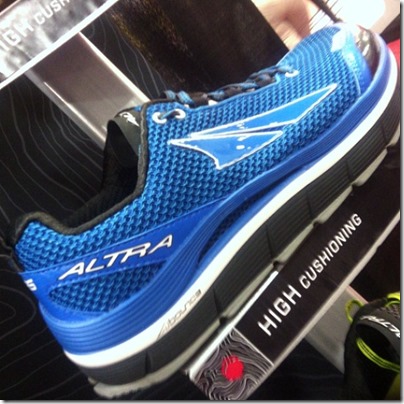
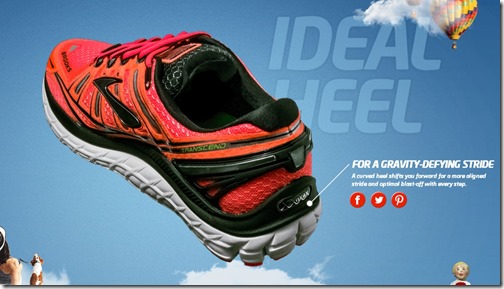
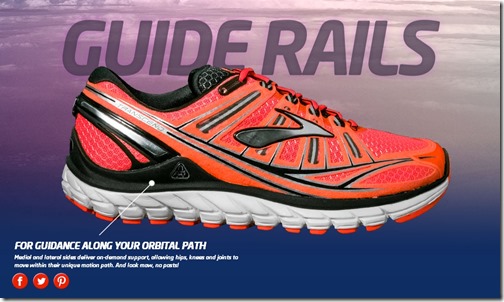
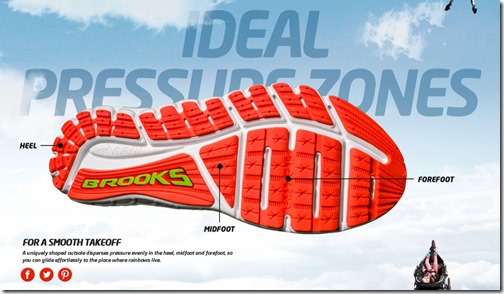
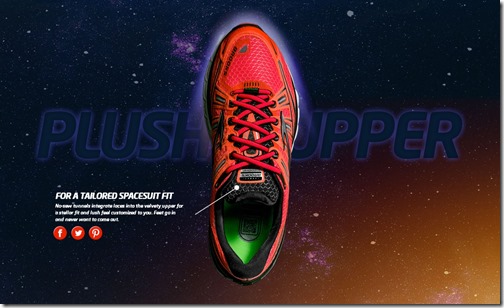
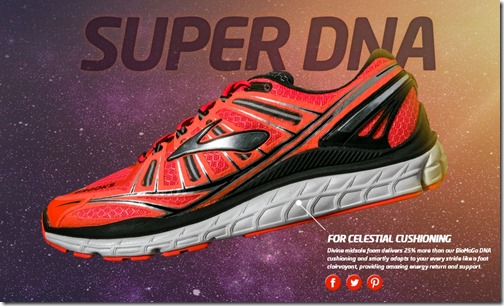
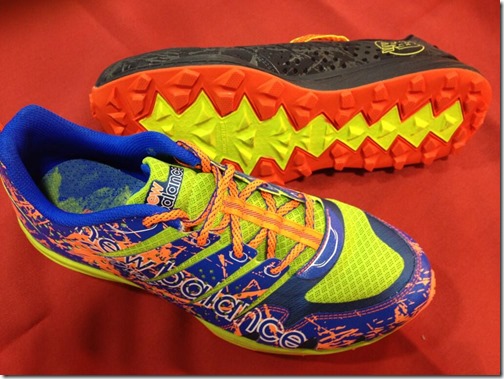
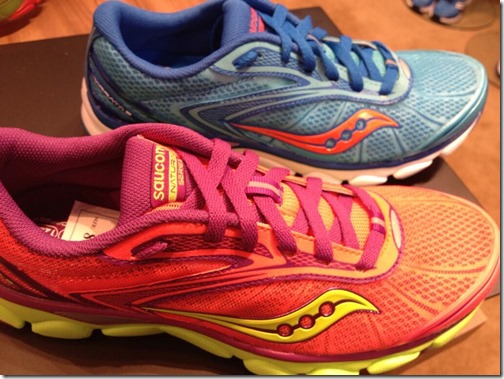

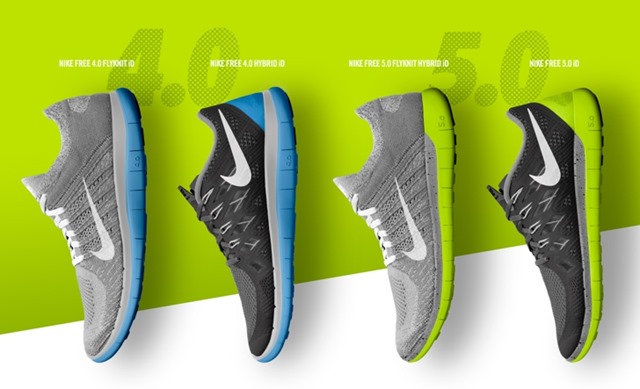
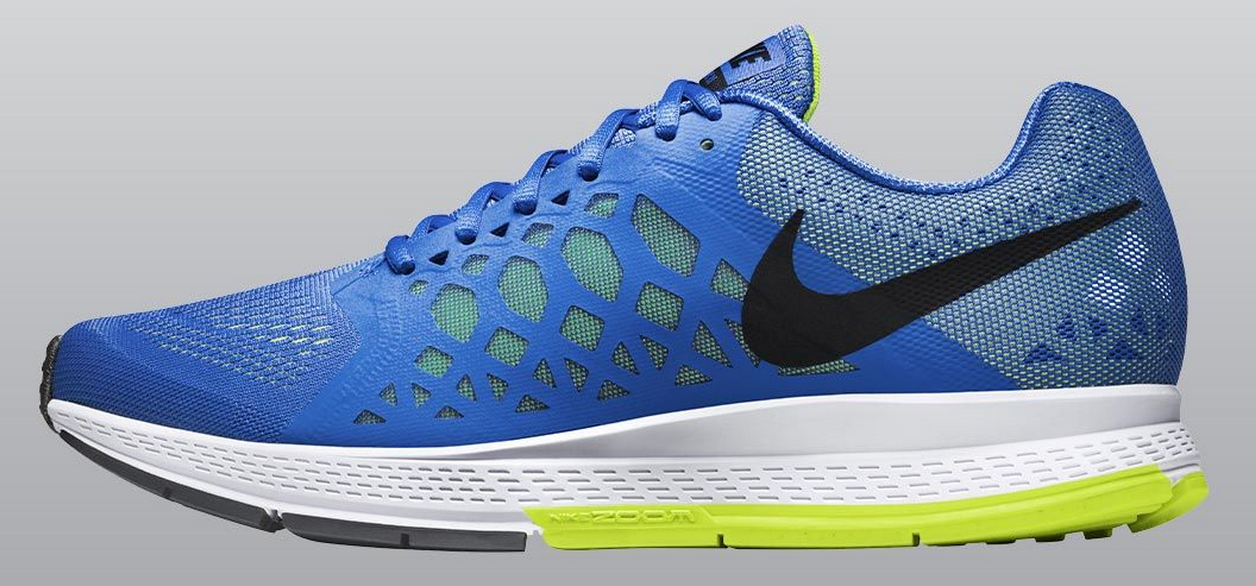
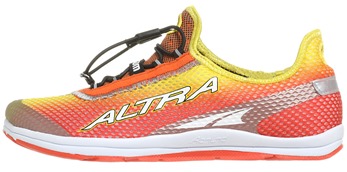
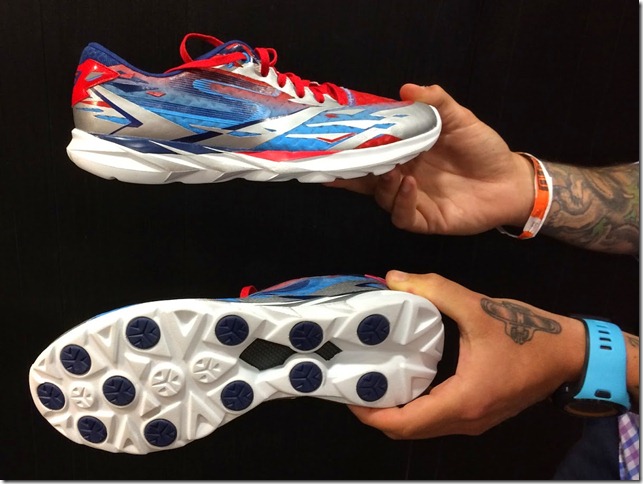














I certainly hope we see shoe brands continue to produce minimal shoes, such as my favorite NB Minimus, even though the pendulum has swung back a bit on the whole minimal trend. That was inevitable, but hopefully shoe brands keep on with minimal shoes for this of us who have found great success with them. I know it’s all about business and they need those shoes to be cost-effective.
According to Competitor the Transcend is 12.2 OZ in a size 9. 8mm drop.
link to running.competitor.com…
Wow, that would be really heavy if that’s correct…definite pass for me.
Too bad, the shape from that underneath shot looks ideal.
Do we really need a higher arch in minimal shoes or even the ultra cushioned shoe like the Altra Olympus. As a forefoot striker I would rather have a shoe that is even from the heel arch and toe. And since there are “NO” zero drop shoes that are zero drop throughout what am i supposed to do just run in huaraches lol Am I the only person that would prefer a “true” zero drop shoe. Mr. Larson do you think there will ever be true zero drop shoe?
I’d say that things like the Merrell Trail Glove, Vibram Fivefingers are zero drop throughout. I don’t think I’d want a shoe that had a sole thickness under the toes the same as under the ball and heel, strikes me that it would make the shoe very inflexible.
—-
Pete Larson’s Web Links:
-My book: Tread Lightly: link to ow.ly
-Blog: https://runblogger.com
-Twitter: link to twitter.com
-Facebook Page: link to facebook.com…
-Discussion Forum: https://runblogger.com/forum
I disagree, flexibility is determined by the what materials are used in the midsole and flex grooves in the outsole. In my experience the shoes i feel most comfortable in just regular converse chucks since they are “true” zero drop. I can walk in converses all day and they are flexible and I can also land on my forefoot easier in them. The only thing is they aren’t cushioned so you not very good for running. All I am talking about is making the arch the same height as the heel, this wouldn’t affect flexibility. I think you misunderstood what I said, I meant to say the forefoot. The toes and the ball of your foot are usually considered your forefoot anyway. The minimal community uses the term heel to toe were the toe also refers to the forefoot.
The minimal community uses the term heel to toe were the toe also to the forefoot.
Ok, gotcha. I think I did misunderstand. So you’re saying flat under the arch? There are some shoes that do this – Altra for example provides two insoles, one is completely flat. Vivobarefoot also does this well.
—-
Pete Larson’s Web Links:
-My book: Tread Lightly: link to ow.ly
-Blog: https://runblogger.com
-Twitter: link to twitter.com
-Facebook Page: link to facebook.com…
-Discussion Forum: https://runblogger.com/forum
No not the insole, I’m talking about the heights of the midsole making everything level the heel, the arch, and the forefoot. The only shoes that do this are canvas shoes like vans or converse. Sure it would take getting used too but it no different from moving from traditional to today’s minimal shoes. But this would be a more natural way of making a shoe. We were born to run without shoes, so if I wanted to protect my foot all I need is a layer cushioning on top of the foot, so different heights of cushioning are not needed for a forefoot striker. So if the heel or arch is higher then the forefoot, you have to lean in more (avoid the back of the shoe) in order to land on your forefoot. If the shoe was even throughout then you don’t have to make a conscious effort to land on you forefoot, this make forefoot running easier and more natural. Everyone has different preferences, and needs for a shoe, If you need to heel strike then you buy a shoe with a well cushioned heel. But you are right, toe shoes and barefoot style like vivobarefoot tend not to have an higher arch, but they don’t offer any cushioning.
I’ve been waiting to see the Saucony Virrata 2. Any idea if the forefoot is wider, or if it will be offered in wide widths? I can’t wear the current model, too narrow. Thanks.
About time the minimalist trend died. I’m tired of these flat shoes making me feel so short. Those max shoes will probably give me at least 1 1/2 more inches! I think I’ll get heavily tattooed and buy a Hummer too. More, more, more!
blech
i mean it was only a matter of time before the minimalism kick slowed down
though stupid marketing was expected, more unrealistic claims, and people who have no idea what they’re doing and blame injuries on the shoes can do that…
for the few who do it right, both runners and companies, thank you…please continue to do what you do
but big companies…well..of course most don’t REALLY care about what’s best, but what gets them the least amount of complaints with the most money
These shoes are still considered “minimalistic” because they have a lower heel to toe ratio even if they are ultra cushioned which is great for trail running in my opinion.. Barefoot style shoes offer little to no cushioning. I prefer minimalistic cushioned shoes because they are better for forefoot striking which is a more efficient way to run compared to heel striking.
….well….mmm..aaah…
i’d have to disagree with the minimalist claim, they may be relatively low stack heights or drops…but imo have way too much to be considered as such
as for forefoot striking and whatnot, striking should be avoided, don’t like the focuses of fore, middle, and heel striking when it should be about points of contact
not to say that striking shouldn’t be talked about, like when correcting certain things, but points of contact need to be adressed more often
as for cushioning, i can really feel the “subtle” change when i land with a shoe with any amount of cushioning compared to without, like barefoot, i don’t like the extra “oomf” when landing so, i tend to dislike cushioning especially for hard surfaces
landing on a soft surface on a hard surface is imo something that should be avoided
Well thats why I put “minimalistic” in quotations… As for cushioning just because a shoe has a higher profile doesn’t mean its going to be mushy because there are many different types of foam and cushioning like air bags… even if some shoes are mushy. In regards to trail running, more and more people are preferring shoes like hokas because since there is more cushioning which also gives you more protection from rocks and uneven surfaces. Some people like ground feel and some don’t. I like to have choices, and everyone should have a right to have whatever kind of shoe they want to wear.
i knew what you meant sorry lol,
though the body does beg to differ on the whatever you want…
heck, my friend got a massive bruise on his foot for stepping on an acorn despite wearing traditional trainers, switched him to barefoot shoes, no problems,
i understand that everyone is different, but not THAT different unless a deformity or disease is present
i also understand that a lot of these new hoka-like shoes are still not as thick as some traditional trainers
but i still feel that cushioning needs to stop and something else needs to happen, since just more rubber or whatever adds plenty of weight and that’s something to avoid too
i’m just not for cushioning…i’m trying to come up with stuff, but i’m no scientist :P
I agree that firmer midsoles will also protect your foot from objects, however you can’t just say they have to stop cushioning because people will buy whatever they want and whatever they feel suits their needs. I will say that cushioning does absorb impact and this is also good for hard surfaces. The goal is to find the right balance between compression and firmness. Yes bouncy shoes may not not be the most efficient but they sure are fun to run in lol. But hey man if you dont like cushioning then you can wear hauraches, vivobarefoots, or toe shoes. And if you change you mind and cross to the other side, there is some great Nike lunar, UA micro g, Brooks DNA, Adidas boost shoes etc.. you can try lol
don’t mean to come off as some guy who doesn’t like change only believes in one way only but i just don’t think people really need all THAT much under their foot
what really matters to me is zero drop, and shape of foot..at least that should still be a direction as cushioning and stack heights will probably always be fluctuating like crazy
And Im not all about cushioning lol because I like to have a choice. But I really want a true zero drop shoe to come out one with where the arch isnt higher than the heel.
I think we are quite a variable species. We all have the same parts, but we vary in weight, athleticism, history of footwear usage, activity levels, daily routines. (E.g., sitting in a chair all day vs. a more active job), etc. as such we differ in mobility, muscular development, and so on. We humans inhabit so many different niches that it’s no surprise to me that different things work for different people.
Sent from my iPad
NB “Fresh Foam” seems interesting as well…
$110, 8.8 oz (men’s size 9), 4mm heel-toe drop. A lightweight neutral trainer built on a new midsole foam called “Fresh Foam” that offers varying levels of structure and flexibility based on the concave and convex sidewall indentations and specific foot strike patterns of a runner.
Merrell also has a line of soft shoes coming, seems to be a trend across the board.
—-
Pete Larson’s Web Links:
-My book: Tread Lightly: link to ow.ly
-Blog: https://runblogger.com
-Twitter: link to twitter.com
-Facebook Page: link to facebook.com…
-Discussion Forum: https://runblogger.com/forum
I agree that the lightweight( well maybe…), lower drop, well or highly cushioned shoe is a significant trend. I have felt so for several years but like any “revolution” lots of fits and starts. The original Hokas were tough to run anything other than slow in for me. I have been at OR and have some info and pics beyond the press releases on the Hoka Conquest and NB FreshFoam on my blog. http://www.samwinebaum.blogspot.com. There seems to be some new science out via Amby Burfoot article at RW link to runnersworld.com…. A study with a small sample, and Pete if you haven’t already welcome your comments on it, showing that the sweet spot for best metabolic efficiency varies by runner based on the amount of cushioning. For some 20mm ( i.e like many of the shoes described in the post) was most efficient, for other 10mm, and for yet others best efficiency with no cushioning. So at least some evidence, maybe taken to some extremes, that there is a need for these new offerings. I certainly appreciate my fresh Hoka or adidas Energy Boost run legs!
Love the final paragraph of Amby’s article, pretty much sums up my thoughts on shoes. Different strokes for different folks.
Sent from my iPad
is that really an update to the 110? it might be the angle in the photo but the last looks more like a traditional new balance shoe than the minimus line – narrower in the forefoot. The m1690 has also abandoned the wide forefoot. I hope thats not a trend with new balance’s minimal shoes. the minimus line fits my feet really well.
I noticed that too, I hope it’s just the photo angle that makes it look narrow.
Sent from my iPad
irunfar has posted some details about a bunch of shoes and both the mt110 update and the mt00 update are ditching the minimus last and going with the more traditionally shaped pl last.
Real bummed about the MT110 update. Don’t even know why NB is calling this a V2. It has nothing in common with the current 110. They’ve changed the last (no more minimus), added a more robust upper with overlays, changed the EVA from Acteva Lite to Rev Lite, ditched the bubble laces, lengthened the rockplate to the whole outsole, have a completely new outsole, added a removable insole which makes this a bit heavier. They’re doing this to make it more of a shoe that can handle 100miles, as the current 110 “supposedly” wasn’t up to snuff at the longer distance. Basically, in my opinion, NB is ruining a perfectly good niche trail shoe. I’m most pissed about the change in last to PL-1. It’s a blend of the 101 and the 1400.
This is unfortunate – the MT110 was one of the best bargains out there for a low-profile, high-mileage trail shoe. Makes no sense to me to turn this into a completely different shoe rather than just making the update a new model…
—-
Pete Larson’s Web Links:
-My book: Tread Lightly: link to ow.ly
-Blog: https://runblogger.com
-Twitter: link to twitter.com
-Facebook Page: link to facebook.com…
-Discussion Forum: https://runblogger.com/forum
anything about a new saucony hattori?
Last I heard it was being discontinued. Try the Adidas Gazelle 2, similar shoe and in my opinion a better shoe. Don’t let the drop scare you, doesn’t feel 6mm.
Sent from my iPad
Pete,
in my experience owning a small store selling only flat shoes that the cushioned and level shoes are safe entry point if the runner is given some simple tools for form instruction. my concern is the excessive softness of shoes that are on the market. we know that it is harder to stabilize on a soft surface. you point out the important principle of “tuning” that Nigg talks of also . each runner a bit different. that being said firmer and flat is the ideal goal and a new shoe that I have tested is the Newton Energy. Less lug effect so more accommodating to the heel and midfoot lander. the key in this shoe is the firmer materials in the forefoot especially and the lack of structural change with miles of wear. this is one worth trying. For the fans of individual toes Vibram also has a line now with some cushion.
Best
Mark
http://www.tworiverstreads.com
Mark – I agree to an extent, I worry about the new runner going into a super soft shoe. But, once you get an idea of how to run well and avoid things like overstriding then I don’t necessarily think firm and flat needs to be the end goal. I prefer a softer shoe for long distances, things like the Kinvara for example. Firmer and stiffer for short and fast. I have also run in the Newton Energy, and my sense is it has the softest heel of about any shoe I have run in. I’d actually worry more about this one allowing form sloppiness than some of their older models with firmer soles.
—-
Pete Larson’s Web Links:
-My book: Tread Lightly: link to ow.ly
-Blog: https://runblogger.com
-Twitter: link to twitter.com
-Facebook Page: link to facebook.com…
-Discussion Forum: https://runblogger.com/forum
thanks for response Pete. yes when one has learned good form and foot/kinetic chain control then they can use whatever tool that fits the purpose. an ultra is a different animal and I cushion up for these too:) it is like golf clubs. learn with the blades (old school clubs with tiny sweet spot) and then pull out the big bertha….not the reverse. did not feel the soft heel of Energy but I am true midfoot/forefoot so probably did not engage it. Best Mark
You can feel the softness just walking in it. Jeff Dengate reports here that RW shoe lab found the Energy to be exceptionally soft in the heel and also the forefoot, heel softer than the Brooks Glycerine: link to facebook.com…
—-
Pete Larson’s Web Links:
-My book: Tread Lightly: link to ow.ly
-Blog: https://runblogger.com
-Twitter: link to twitter.com
-Facebook Page: link to facebook.com…
-Discussion Forum: https://runblogger.com/forum
I am a new runner (since April), and elected to go for a cushioned shoe because of some degenerative disks in my lower back – my orthopedist said I can run, but not on a hard surface because of impact. Obviously, I’m really trying to be good about a fore/mid-foot landing to minimize impact, but figured the shoe would further reduce impact. What are the thoughts of you experienced runners? Especially any of you with degenerative disks?
How has your back been doing so far?
—-
Pete Larson’s Web Links:
-My book: Tread Lightly: link to ow.ly
-Blog: https://runblogger.com
-Twitter: link to twitter.com
-Facebook Page: link to facebook.com…
-Discussion Forum: https://runblogger.com/forum
Well, that is why I purchased the cushioned shoes – whenever I go for more than minimal runs (for me – over 5 mi), my back really hurts and I have to lay off for a week. (And that is on dirt trails, not concrete.) I got the shoes, and went for a 1.5mi run on a gravel track, and my back hurt worse, but that wasn’t really fair since it was already hurting a little when I went. I’m hoping when it stops hurting, I can take these shoes to the trails and be able to do longer runs. I’m working with a personal trainer to strengthen all muscle groups, but particularly core, to protect my lower back. My strength is already quite good, but I want to RUN!!
Which brand and model of shoes are you running in? Something a bit different like the Altra Torin might be worth trying if what you are in now isn’t working. It would also be interesting to look at your form and see if you are rotating your pelvis forward to extend your thigh during push off.
Sent from my iPad
I agree that the Trance will most likely be replaced by the Transcend. If not, they missed a golden “trance end” marketing opportunity!
I have used the Altra Instinct 1.5, the Altra One and the Altra Torin.
All 3 of these shoes are good but none of them is perfect. The Instinct 1.5 has an awesome shape and there is NO other shoe that allows my foot to relax and spread like the Instinct 1.5 does. The zero drop combined with foot shaped last makes for an awesome run. However as the miles racked up, the cushioning quickly went down. The soles are now like a solid piece of thick, flat, hard rubber.
The Ones are a great shape and zero drop but never did come with any cushioning. They are a good shoe to teach proper form and win races but they do not have cushioning and were never designed to. They are minimalist by design yet with protection.
The Torins have great cushioning and you can really put down the miles however the Torins lost that awesome toe box and foot shape of the Instinct 1.5. The Torins make the outside of my foot, near the toes hurt. There is just not the same room as the Instinct 1.5. Close but not the same.
I really hope the new Olympus or new Instinct 2.0 has the great shape and comfort of the previous Instinct 1.5 yet with all the cushioning of the Torin. This would make the perfect shoe.
Does anybody have an opinion as to which 1 of these new shoes will be better from me? The Olympus or the Instinct 2.0? They are both on backorder but I am going to place a pre order as soon as I decide which 1 to try.
Thanks,
Jeff Colorado